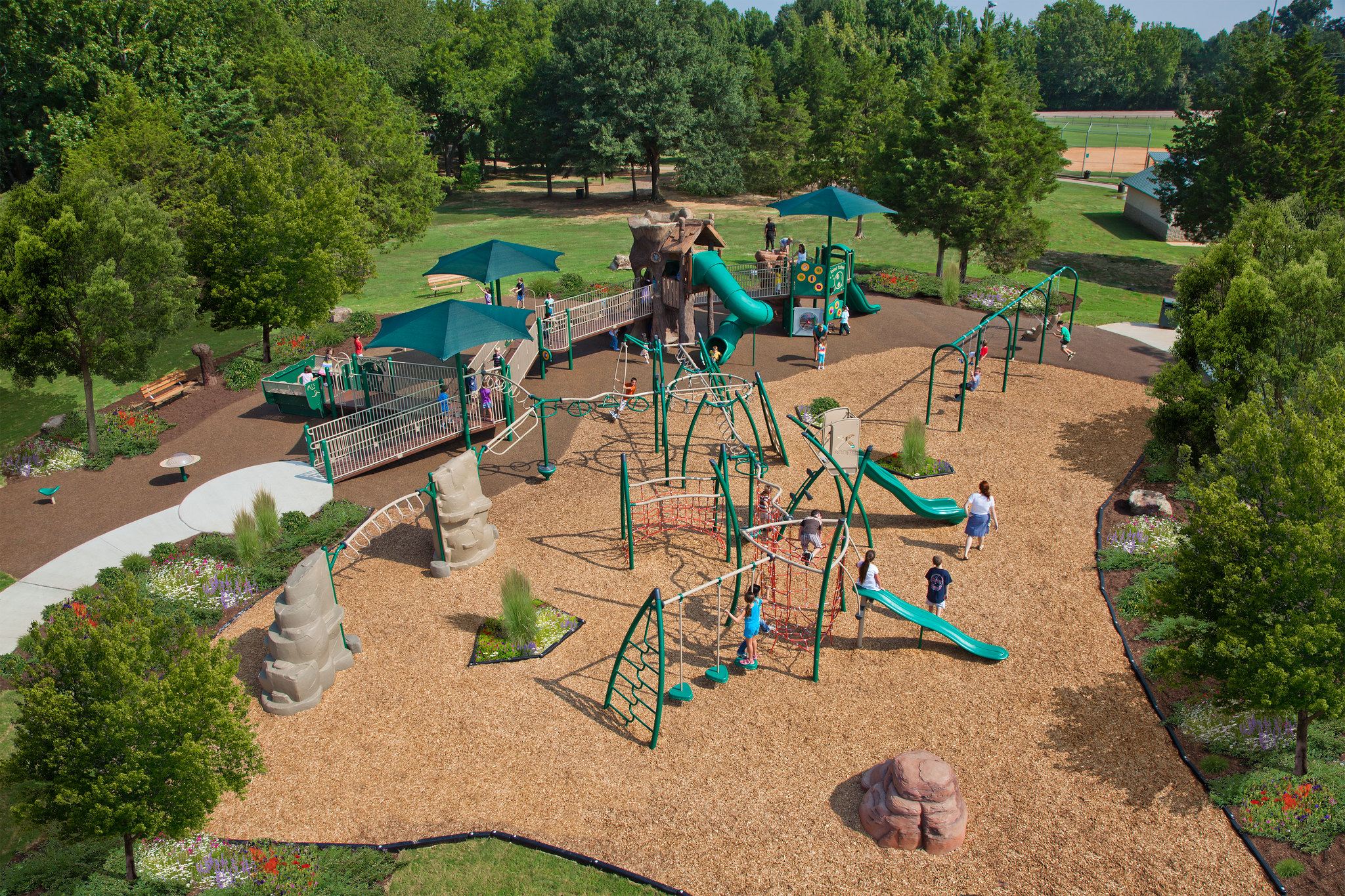Nature is the perfect opportunity for children to learn and grow. The natural environment is for exploration and discovery. A few decades ago, this was a typical day in the life of most children, however, that is no longer the case. With an increase of screen time, children are becoming more sedentary and don’t spend much time outdoors. Children who spend more time outside playing in nature and getting more physical activity tend to be better students, healthier, happier and grow up to be better stewards of nature and the world they live in.
Now more than ever, it is important to reconnect children with nature. Here are a few ways to incorporate nature into your playground designs.
-
Choose Natural Looking Equipment
To give your playground a natural look and feel, choose natural looking equipment that blends in with the natural environment. Trees, rocks, boulders, nets and ropes are all found in nature. Play spaces with components created from glass fiber reinforced concrete (GFRC) that are made to look like fallen logs, tree stumps and boulders provide a nature visual and tactile experience. The bark of the fallen log or tree stumps look and feel just like real tree bark. This type of material allows a manufacturer to design everything from ants and anthills to large treehouses.
The traditional manufactured play equipment will take a bit more work to give it a natural look, but it can be accomplished. Add one or two key GFRC pieces, select nature-inspired pieces like a butterfly climber, vine climber, dragonfly seesaw or a leaf seat spinner. Most importantly, with traditional post and platform play equipment use a natural color palette to keep with the naturescape look and feel. Check out our nature-inspired playgrounds today!
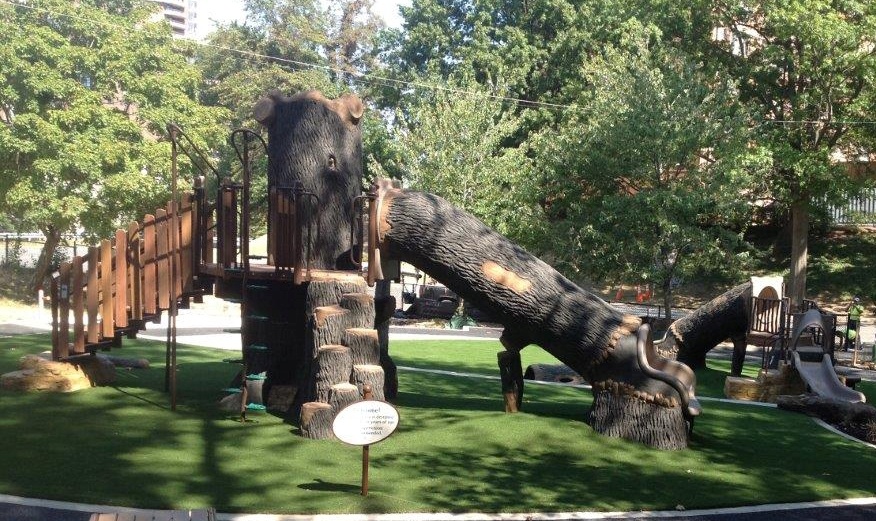
-
Utilize Existing Topography of Site
Kids love to climb and work on their gross motor skills so there’s no reason why your playground has to be entirely flat. If you’re working with a site that has slopes or hills, that’s fine! Use the topography of the site to your benefit. Put in a hillside slide and a rope net climber for children to slide down and climb or run back up. You can also create your own mounds and slopes using poured-in-place rubber safety surfacing to add interest to your design. Terracing play areas with non-traditional climbers to transition from one play area to another and provides unique one-of-a-kind experiences for park guests. Working around existing trees will allow you to separate play areas by age group or types of play. Connect play areas of the park with walkways and places guests can sit and rest or enjoy watching their children play.
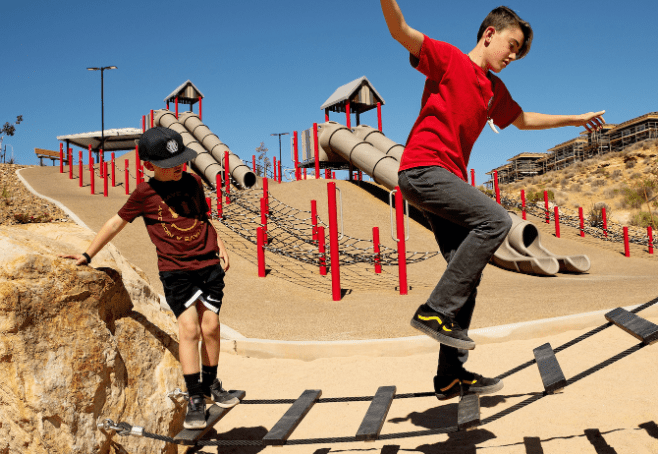
-
Add Water Features
Perhaps the most popular option for young children is water. This may sound messy, but there are many creative ways to bring water into your park or playground design without it being a nuisance to parents. Here are a few ideas to consider:
- The parents of small children tend to prefer splashpads because they’re safe, refreshing and they are zero-depth. Consider adding water features like dumping buckets, spray jets, geysers and sprinklers.
- Bubblers and Misters. Consider including small area adjacent to your natural playground equipment that would utilize bubblers and/or misting features with a poured-in-place surfacing made to look like a river. This will allow children to cool off and enjoy some water play. Best of all it is a safe option for added fun.
- Water Tables. Standing water isn’t allowed on most playgrounds, which means it needs to flow constantly and have a place to drain. You can do this with water tables with or without sand. Plus, sand is another natural element that kids love to play with!
- Natural Water. Another option is to build your playground near a natural stream or river. While the kids may not be able to get wet, they can follow trails along the water, go fishing and sit on the rocks. With parental supervision, kids can get their feet wet in shallow water.
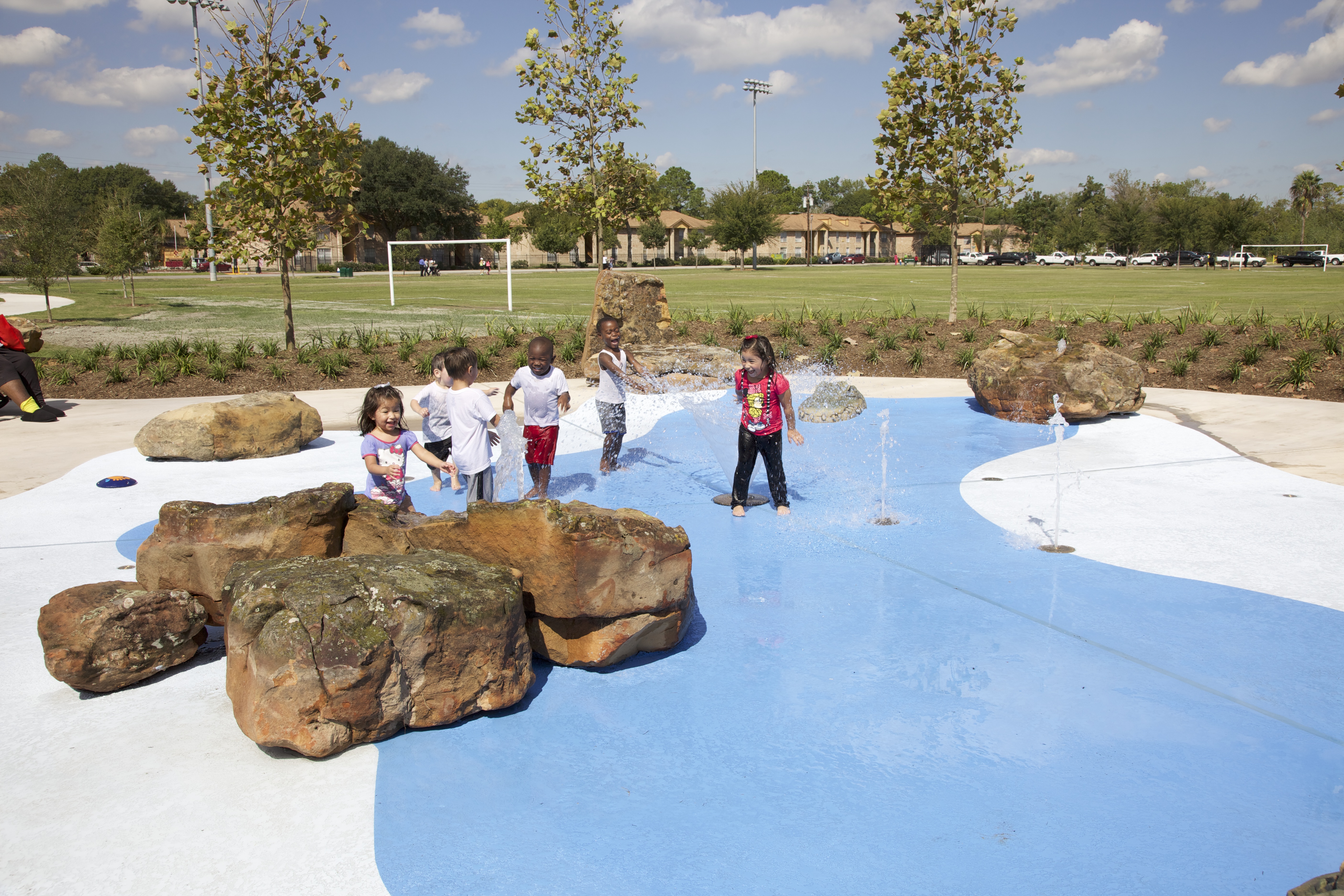
-
Plant Trees and Flowers
We always encourage our clients to work with the trees in their area. Why? Because trees are a natural source of shade and privacy. Having mature trees can also save you money on shade structures. Additionally, a park full of trees encourages people to get outdoors and play naturally.
Peaceful areas to sit and enjoy a book or a cup of coffee near a garden or a fountain are also enjoyed by guests who are less active or getting out for some fresh air on their lunch. Depending on the size, type and purpose of your park, you may also consider planting flowers, planter boxes or growing a community garden that everyone can take care of.
Bringing nature into your playground design can be as simple or as extravagant as you would like. To discuss your options for a nature-inspired commercial playground, contact CR Studio Design today.
